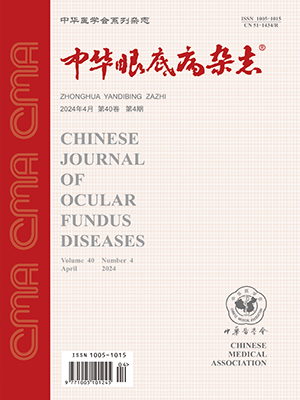| 1. |
Lustman PJ, Clouse RE.Depression in diabetic patients:the relationship between mood and glycemic control[J].J Diabetes Complications, 2005, 19(2):113-122.
|
| 2. |
Regen F, Merkl A, Heuser I.Diabetes and depression[J].Dtsch Med Wochenschr, 2005, 130(17):1097-1102.
|
| 3. |
王德全, 任建民, 程梅.2型糖尿病患者抑郁的患病率及其危险因素[J].中国糖尿病杂志, 2003, 11(1):38-40.
|
| 4. |
楼雪勇, 林铮, 何晓雯.糖尿病人群伴发抑郁症的临床研究[J].中国初级卫生保健, 2009, 23(10):118-119.
|
| 5. |
张志华, 杨滨海. 2型糖尿病发生抑郁的相关因素分析及心理干预[J].实用糖尿病杂志, 2009, 5(6):50-51.
|
| 6. |
陈彩秀, 王定佑, 李润生.糖尿病并发抑郁症的临床相关因素分析[J].实用糖尿病杂志, 2009, 5(3):25-26.
|
| 7. |
Alan M, Alanm J, Bases H.Psychosocial therapies in diabetes[J].Diabetes Care, 2001, 24(7):1286-1290.
|
| 8. |
Francois P, Herman J, Frank J.Monitoring of psychological well-being in out-patients with diabetes[J].Diabetes Care, 2001, 24(11):1929-1934.
|
| 9. |
杨娟, 李斯俭.社区2型糖尿病患者抑郁状况及相关因素的调查分析[J].中国护理杂志, 2009, 44(7):658-659.
|
| 10. |
陆再英, 钟南山.糖尿病[M]//陆再英, 钟南山.内科学.7版.北京:人民卫生出版社, 2008:770-794.
|
| 11. |
于冬妮, 郭立新.糖尿病诊断标准变迁及对糖化血红蛋白作为糖尿病诊断标准的思考[J].中国实用内科杂志, 2009, 29(9):805-807.
|
| 12. |
Nelson JC.Anxiety does not predict response to duloxetine in major depression:results of a pooled analysis of individual patient data from 11 placebo-controlled trials[J]. Depress Anxiety, 2010, 27(1):12-18.
|
| 13. |
Adler LA, Liebowitz M, Kronenberger W. Atomoxetine treatment in adults with attention-deficit/hyperactivity disorder and comorbid social anxiety disorder[J]. Depress Anxiety, 2009, 26(3):212-221.
|
| 14. |
Demakakos P, Pierce MB, Hardy R.Depressive symptoms and risk of type 2 diabetes in a national sample of middle-aged and older adults:the English longitudinal study of aging[J].Diabetes Care, 2010, 33(4):792-797.
|
| 15. |
Bouwman V, Adriaanse MC, van Riet E. Depression, anxiety and glueose metabolism in the general dutch population:the new Hoorn study. PLoS One, 2010, 5(4):9971. http://journals.plos.org/plosone/article?id=10.1371/journal.pone.0009971..
|
| 16. |
Brown LC, Majumdar SR, Johnson JA. Type of antidepressant therapy and risk of type 2 diabetes in people with depression[J]. Diabetes Res Clin Pract, 2008, 9(1):61-67.
|
| 17. |
Brown LC, Majumdar SR, Newman SC. Type 2 diabetes does not increase risk of depression[J]. CMAJ, 2006, 175(1):42-46.
|
| 18. |
Brown LC, Majumdar SR, Newman SC. History of depression increases risk of type 2 Diabetes in younger adults[J]. Diabetes Care, 2005, 28(5):1063-1067.
|
| 19. |
Paschalides C, Wearden AJ, Dunkerley R, et al. The associations of anxiety, depression and personal illness representations with glycaemic control and health-related quality of life in patients with type 2 diabetes mellitus[J]. J Psychosom Res, 2004, 57(6):557-564.
|




